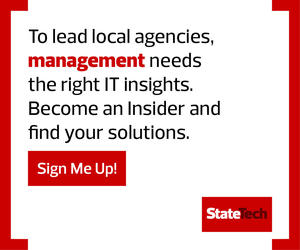We’ve seen with some of our folks increased efficiency by being able to be in an environment where they haven’t had interruptions. I think we’ve seen that in my organization as well. We see the opportunity to optimize office space, things like that. No decisions have been made, but we do recognize the benefits that are associated with going to a hybrid model. Within the State Information Technology Services Division, my department as a whole, we certainly are going to be hybrid.
RELATED: How will remote work tools help state agencies recruit new talent?
STATETECH: You’re really enthusiastic about the idea of adding in the roles of chief data officer and a customer experience officer. Can you talk about your vision there?
Gilbertson: There’s a lot of different things here. Let’s start with the chief customer success office. This is something we are getting up and running here in May. We’re moving rather quickly on this. The structure that we’re setting up is similar to those that other states have set up for these types of offices. We are basically distributed, so we’ve got central IT, and then each agency has its own IT, but what we’re trying to do for customer success is ensure that, in working with the agencies, they can take the most advantage of the work that we’re doing here.
Customer success managers are going to be assigned to agencies. Therefore, the agencies have a single person that they can come to in SITSD to basically track down anything that they need — monitoring their tickets in the ticketing system, things like that, and hopefully just making sure that they’re maximizing the investment that every agency makes in IT, both from their own as well as what we provide them.
From that perspective, with some other things, such as a combined strategic planning where we’re doing a CIO strategy conference here later this the summer, we’re creating relationships with the agencies where we can be collaborating to eliminate redundancy and inefficiency wherever we see it. That will take some time to put in place, but those are some of the things that we’re aiming for there.
Now the chief data officer role, I don’t want to speak too much for that, because we’ve identified that role as not reporting only to me, although I will have interaction with that role. It will be also within the Department of Administration.
This is a new role. We’re now just trying to look at first principles. What data exists throughout the agencies? What should the data infrastructure be? What is modern, but supportable and affordable? How can we address security concerns? Above all, just establishing data governance that brings together all the disparate data.
Once that happens, of course, then all of a sudden we get the ability to do more data-driven decision-making. Because we will have that available to us — and it may be as simple as doing this visualization through Tableau, or something a little bit more advanced where we may be trying to do some machine learning with that data. I can’t speak for the person who’s going to take that role, but the initial role here is really going to be setting a foundation for how to get that data into a place where it’s usable by the state.













